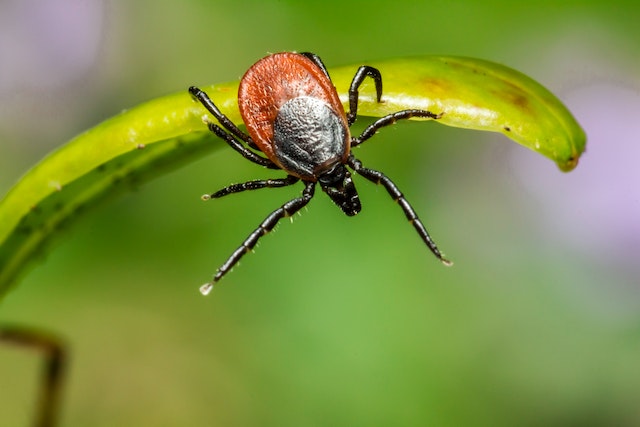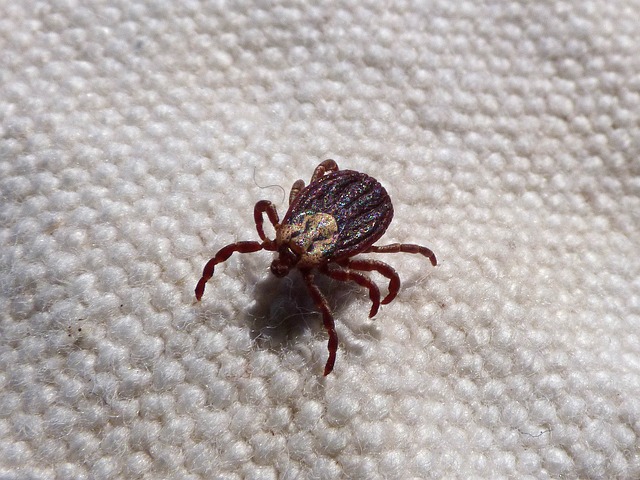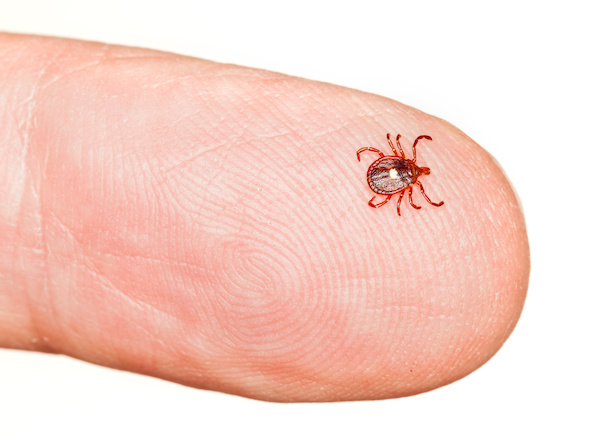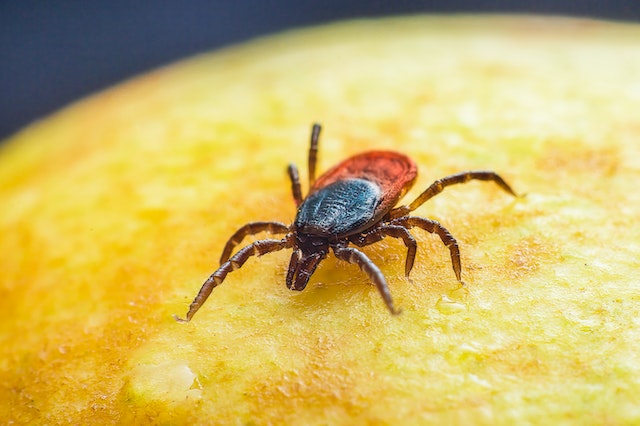New York State has diverse landscapes that are home to vibrant wildlife. However, it’s important to be aware that these beautiful surroundings also harbor various tick species that can pose health risks to both humans and animals.
In this extensive guide, we will delve into the world of ticks in New York, with a specific emphasis on the Middletown area. Understanding the local tick population is essential for taking proactive measures to safeguard the well-being of yourself and your loved ones.

Blacklegged Ticks (Ixodes scapularis)
Blacklegged ticks, commonly referred to as deer ticks, are abundant in New York State, including Middletown. These tiny arachnids are known carriers of Lyme disease, a potentially severe illness. Being aware of their presence and the associated risks is crucial, especially if you enjoy outdoor activities.
Lyme Disease and Blacklegged Ticks
The bacterium Borrelia burgdorferi causes Lyme disease, transmitted through an infected tick bite. Symptoms often start with flu-like symptoms, such as fever, chills, and fatigue.
However, one of the hallmark signs of Lyme disease is the characteristic “bull’s-eye” rash, known as erythema migrans, which often appears at the site of the tick bite. Though not present in all cases, this rash is a strong indicator of Lyme disease.
If Lyme disease goes untreated, the bacteria can disseminate throughout the body, potentially leading to more severe complications. Joint pain, swelling, and stiffness can occur, particularly in the knees. In extreme cases, the disease may affect the heart, leading to cardiac abnormalities or impact the nervous system, causing symptoms like memory problems and muscle weakness.
Preventative Measures for Blacklegged Ticks in New York
Given the serious nature of Lyme disease, it’s important to take proactive steps to reduce encountering many of the ticks New York, particularly blacklegged ticks. Here are some detailed preventive measures you can implement:
- Wear Long Sleeves and Pants: Cover your skin with long sleeves and pants when venturing into tick-prone areas. Tucking your pants into your socks can provide an additional barrier to minimize the chances of ticks latching onto your skin, as they often latch onto exposed areas.
- Use Insect Repellent: Applying an EPA-registered insect repellent to exposed skin and clothing can significantly reduce the likelihood of tick bites. Look for repellents specifically designed to deter ticks, and follow the manufacturer’s instructions for safe and effective use.
- Perform Regular Tick Checks: After spending time outdoors, whether hiking, gardening, or simply enjoying nature, it’s essential to conduct thorough tick checks. Inspect not only your skin but also your clothing and gear. Pay close attention to hidden areas, such as behind your knees, under your armpits, and in your hair. Ticks are small and easy to miss, so a careful examination is critical.
American Dog Ticks (Dermacentor variabilis)
American dog ticks, scientifically known as Dermacentor variabilis, are another tick species commonly found in New York. These ticks are often prevalent in grassy areas and woodlands, making encounters with them more likely during outdoor activities.

Rocky Mountain Spotted Fever and American Dog Ticks
One of the diseases associated with American dog ticks is Rocky Mountain spotted fever, a potentially severe illness caused by the bacterium Rickettsia rickettsii.
Rocky Mountain spotted fever is characterized by various symptoms that can range in severity. It typically begins with symptoms reminiscent of the flu, such as fever, headache, and fatigue.
As the disease progresses, a distinctive spotted rash often develops. The rash usually starts on the wrists and ankles before spreading to other body parts. If left untreated, Rocky Mountain spotted fever can lead to more severe complications, including damage to internal organs.
Preventative Measures for American Dog Ticks in New York
Given the potential risks associated with American dog ticks, it’s essential to take proactive steps to reduce the likelihood of tick encounters and tick-borne illnesses:
- Avoid Tall Grass and Brush: When spending time in areas where American dog ticks are common, such as grassy fields and wooded areas, it’s advisable to stick to cleared paths and trails. Staying on designated paths can significantly reduce your exposure to these ticks, as they tend to lurk in tall grasses and underbrush.
- Treat Pets: American dog ticks are particularly prone to infesting dogs. To protect your furry companions and minimize the risk of bringing ticks into your home, consult your veterinarian for tick control options. Mant tick preventatives are available for pets, such as topical treatments, oral medications, and tick collars.
Lone Star Ticks (Amblyomma americanum)
Lone Star ticks, scientifically known as Amblyomma americanum, have become increasingly prevalent in New York, particularly in southern regions, including Middletown. These ticks, recognized by the distinct white spot on the back of the adult females, can transmit several diseases, making it essential to be vigilant in tick-prone areas.

Lone Star Ticks Diseases
Ehrlichiosis is one of the diseases associated with Lone Star ticks in New York. This bacterial illness is caused by species of Ehrlichia, which are transmitted when an infected Lone Star tick bites a human host. Ehrlichiosis can result in a range of symptoms, often mirroring those of the flu.
Some common indicators of the disease include:
- Fever: Ehrlichiosis can lead to high fever, which may persist for an extended period.
- Fatigue: Profound fatigue and weakness are common symptoms of this disease.
- Muscle Aches: Muscle and joint pain, along with headaches, are frequently reported by those infected.
In severe cases or when left untreated, Ehrlichiosis can lead to complications, including respiratory problems and neurological issues. Early diagnosis and treatment are essential to manage the disease effectively.
Bites from Lone Star ticks can also trigger a unique allergic reaction in some individuals, known as alpha-gal allergy. This peculiar allergy can lead to adverse reactions to red meat, such as beef, pork, and lamb.
Those affected may experience symptoms ranging from hives and gastrointestinal distress to more severe anaphylactic reactions after consuming meat.
Preventative Measures for Lone Star Ticks in New York
Here are some precautions to take to minimize the risk of Lone Star tick bites:
- Wear Light-Colored Clothing: Opt for light-colored attire when venturing into tick-prone areas. Light clothing makes spotting ticks on your clothes easier, aiding in timely detection and removal. Tuck your pants into your socks and wear long sleeves to create a barrier against ticks.
- Remove Ticks Promptly: After spending time outdoors, conduct thorough tick checks on yourself, your family members, and your pets. If you find a tick attached to your skin, use fine-tipped tweezers to extract it carefully. Grasp the tick as close to the skin’s surface as possible and pull upward with steady, even pressure. Be sure to clean the bite area and your hands with rubbing alcohol, soap, and water. Dispose of the tick in a sealed container.
Fight Back Against Ticks in New York With Us!
At United States Pest Service, we understand the importance of safeguarding your family and property from the ever-present threat of ticks in New York.
We know that ticks are not just pests; they are vectors for a range of diseases that can have serious health consequences. Our mission is to help protect you and your loved ones from tick-borne illnesses like Lyme disease, Rocky Mountain spotted fever, and Ehrlichiosis.
Each property is unique, and our approach is tailored to your specific needs. We consider local tick species and environmental factors to develop a customized plan that is most effective for your situation.
DIY tick control can be time-consuming and require significant effort. By choosing our services, you can save time and focus on what you love. We manage tick populations, so you don’t have to.
Contact us today to schedule your next tick treatment!

